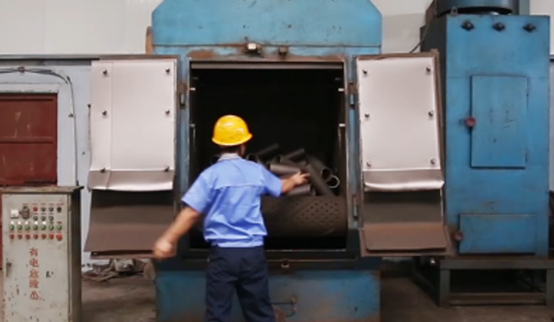 Afrikaans
Afrikaans  Albanian
Albanian  Amharic
Amharic  Arabic
Arabic  Armenian
Armenian  Azerbaijani
Azerbaijani  Basque
Basque  Belarusian
Belarusian  Bengali
Bengali  Bosnian
Bosnian  Bulgarian
Bulgarian  Catalan
Catalan  Cebuano
Cebuano  Corsican
Corsican  Croatian
Croatian  Czech
Czech  Danish
Danish  Dutch
Dutch  English
English  Esperanto
Esperanto  Estonian
Estonian  Finnish
Finnish  French
French  Frisian
Frisian  Galician
Galician  Georgian
Georgian  German
German  Greek
Greek  Gujarati
Gujarati  Haitian Creole
Haitian Creole  hausa
hausa  hawaiian
hawaiian  Hebrew
Hebrew  Hindi
Hindi  Miao
Miao  Hungarian
Hungarian  Icelandic
Icelandic  igbo
igbo  Indonesian
Indonesian  irish
irish  Italian
Italian  Japanese
Japanese  Javanese
Javanese  Kannada
Kannada  kazakh
kazakh  Khmer
Khmer  Rwandese
Rwandese  Korean
Korean  Kurdish
Kurdish  Kyrgyz
Kyrgyz  Lao
Lao  Latin
Latin  Latvian
Latvian  Lithuanian
Lithuanian  Luxembourgish
Luxembourgish  Macedonian
Macedonian  Malgashi
Malgashi  Malay
Malay  Malayalam
Malayalam  Maltese
Maltese  Maori
Maori  Marathi
Marathi  Mongolian
Mongolian  Myanmar
Myanmar  Nepali
Nepali  Norwegian
Norwegian  Norwegian
Norwegian  Occitan
Occitan  Pashto
Pashto  Persian
Persian  Polish
Polish  Portuguese
Portuguese  Punjabi
Punjabi  Romanian
Romanian  Russian
Russian  Samoan
Samoan  Scottish Gaelic
Scottish Gaelic  Serbian
Serbian  Sesotho
Sesotho  Shona
Shona  Sindhi
Sindhi  Sinhala
Sinhala  Slovak
Slovak  Slovenian
Slovenian  Somali
Somali  Spanish
Spanish  Sundanese
Sundanese  Swahili
Swahili  Swedish
Swedish  Tagalog
Tagalog  Tajik
Tajik  Tamil
Tamil  Tatar
Tatar  Telugu
Telugu  Thai
Thai  Turkish
Turkish  Turkmen
Turkmen  Ukrainian
Ukrainian  Urdu
Urdu  Uighur
Uighur  Uzbek
Uzbek  Vietnamese
Vietnamese  Welsh
Welsh  Bantu
Bantu  Yiddish
Yiddish  Yoruba
Yoruba  Zulu
Zulu lagging rubber
Understanding Lagging Rubber A Critical Component in Industry
Lagging rubber is an essential material widely used in various industrial applications, particularly in the mining, construction, and manufacturing sectors. Its primary role is to enhance the performance of machinery by providing a protective and durable surface, which ultimately improves efficiency and longevity. This article will explore the properties, applications, and advantages of lagging rubber in industrial settings.
What is Lagging Rubber?
Lagging rubber refers to a type of rubber material that is used to coat and protect the surfaces of industrial equipment, particularly rollers and conveyors. This rubberized surface is designed to withstand extreme conditions, such as heavy wear, harsh climates, and chemical exposure. By providing a non-slip surface, lagging rubber not only enhances grip but also reduces noise and vibrations—a significant benefit in environments where machinery operates continuously.
Properties and Types
The characteristics of lagging rubber can vary significantly based on its formulation. Typically, it is designed to be abrasion-resistant, making it suitable for high-impact applications. Common types of lagging rubber include natural rubber, synthetic rubber, and polyurethane. Each type has its unique properties, making them ideal for specific applications. For example, natural rubber is known for its elasticity and resilience, while synthetic rubber often exhibits enhanced resistance to chemicals and temperatures.
Applications in Industry
Lagging rubber finds its applications primarily in the following areas
1. Conveyor Systems In mining operations and material handling, lagging rubber is used on conveyor belts to improve grip and reduce slippage. This ensures smooth operations, especially in environments where materials can be slippery or abrasive.
2. Pulley Systems Lagging rubber is commonly applied to pulleys to enhance their friction and grip. This is particularly essential in lifting equipment, where stability is crucial for safety and operational efficiency.
lagging rubber

3. Industrial Machinery Numerous industrial machines use lagging rubber to maintain performance and extend service life. In presses, mixers, and mills, the rubber acts as a protective barrier against wear and tear.
4. Noise Reduction Lagging rubber is also effective in noise reduction, making it a valuable addition to machinery in environments where sound levels must be controlled.
Advantages of Lagging Rubber
The use of lagging rubber in industrial applications offers several advantages
- Enhanced Durability Lagging rubber significantly increases the lifespan of machinery components by protecting them from damage and wear.
- Improved Safety By providing better grip on rollers and conveyors, lagging rubber reduces the risk of accidents associated with slippage, thus enhancing workplace safety.
- Cost-Effectiveness Although there is an initial cost associated with installing lagging rubber, the long-term savings from reduced maintenance and prolonged equipment life make it a wise investment.
- Versatility Given its variety of formulations, lagging rubber can be customized to meet the specific needs of various industries, making it a versatile solution for different operational challenges.
Conclusion
Incorporating lagging rubber into industrial machinery is not just a matter of functionality; it is a strategic decision that can enhance operational efficiency and safety. As industries continue to innovate and demand higher performance standards from their equipment, the role of lagging rubber will only become more critical. Understanding its properties, applications, and benefits equips businesses with the knowledge needed to make informed choices about the materials they use in their operations, ultimately leading to better performance and longevity in their machinery.
-
Revolutionizing Conveyor Reliability with Advanced Rubber Lagging PulleysNewsJul.22,2025
-
Powering Precision and Durability with Expert Manufacturers of Conveyor ComponentsNewsJul.22,2025
-
Optimizing Conveyor Systems with Advanced Conveyor AccessoriesNewsJul.22,2025
-
Maximize Conveyor Efficiency with Quality Conveyor Idler PulleysNewsJul.22,2025
-
Future-Proof Your Conveyor System with High-Performance Polyurethane RollerNewsJul.22,2025
-
Driving Efficiency Forward with Quality Idlers and RollersNewsJul.22,2025





























